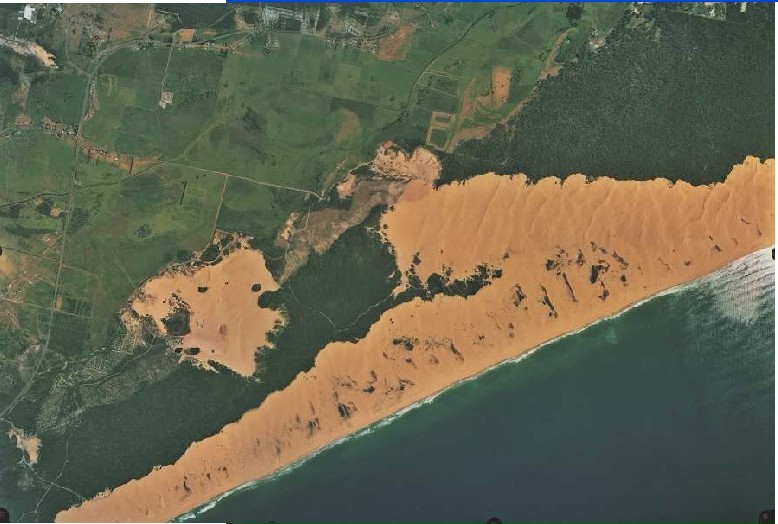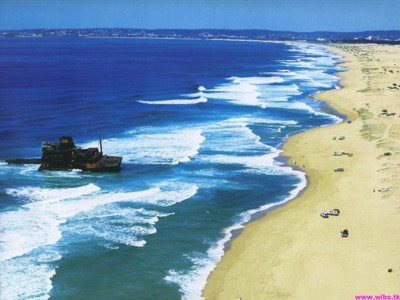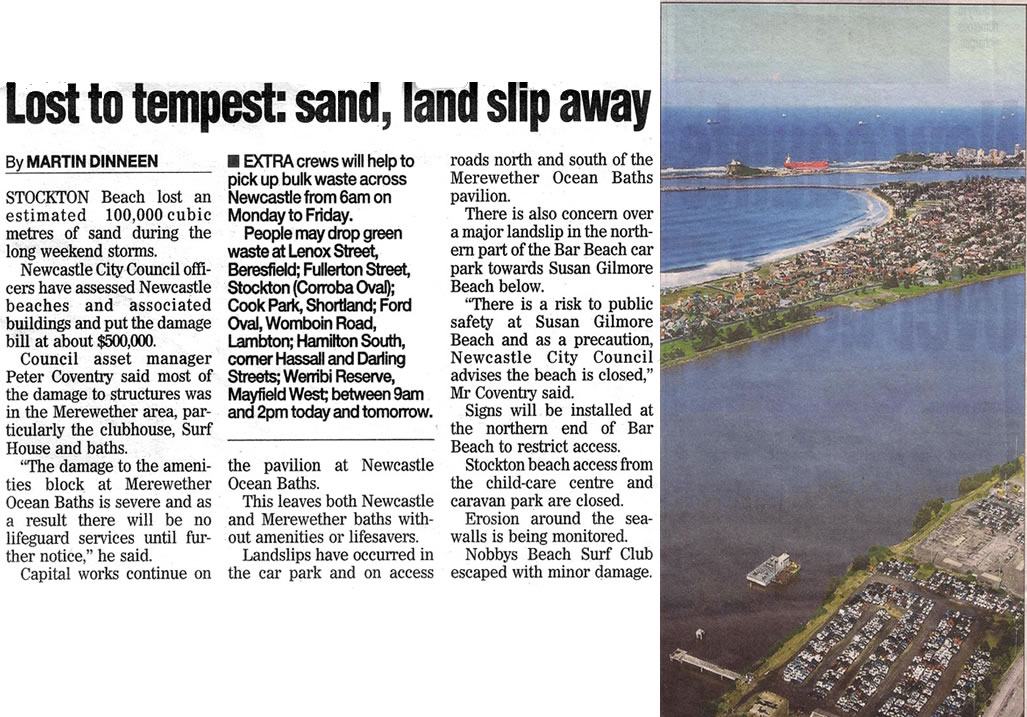
2.5 Adjustments to Natural Stress
There are a number of natural stress events that affect Coastal Sand Dunes. In particularstorm damage and bush fires in the tertiary vegetation zone are common.
Sand Dune Ecosystems have evolved to adjust to these stress events.
a) Storm Damage
The heavy rain, strong winds and powerful waves associated with storms can cause major structural damage to the dune system. Blowouts and Washoversare among the most spectacular and destructive forms of natural stress on Coastal Sand Dunes.
Blowouts

- The Tongue:the larger of the two it is aproximately 5.5km long and extends 1.9km inland
- The Bowl:a smaller blowout that probably originated from careless land use practices in recent times
Washovers
Heavy storms often bring with them heavy destructive waves which can breach the foredune area.
- The waves become so large and powerful that they travel further up the swash zone. and they wash over the incipient and foredune area. The waves erode the sand away, back into the ocean as the primary vegetation is not strong enough to hold it.
- With each following waves flowing over the dunes the washover continues to remove sand and vegetation.
- The figure to the right highlights this.
- Coastal Sand Dunes adjust to this natural stress event as washovers are part of the accretion cycle. Over time the depositing of sand particles through constructive waves and gentle breezes reconstruct the eroded foredune area
- Adjustment is also helped along through vegetation succession which helps stabilise the dunes once again.
- In the Stockton Coastal Sand Dunes Washovers have been natural stress event that has impacted on this ecosystem at risk.
- One particular Storm was the (so called as that is the storm that grounded the Sygna shipwreck).
- During May 1974 the NSW coast was being battered by large storms. Newcastle port (immediately south of Stockton Bight) reported a swell of over 17 meters at the entrance and the winds were gusting at 165km/h. If the Storm was located in the topical regions it would have been classified a tropical cyclone. This storm was so strong that it pushed a coal ship (the Sygna) onto Stockton
- The impact of the storm on the dunes was that the 17 meter high waves washed over the well developed foredune areas in the centre of the bight and flattened them.
- Another significan storm was the June Longweekend Storm of 2007 (Pasha Bulker Storm). Read the article below to see how much sand was eroded during that storm. Source; Newcastle Herald June 2007
- Over time, through the depositing process of the accretion cycle, the sand will relpenish and rebuild the beach again.


b) Bush Fires
- Bush fires are another natural stress event that occur in the tertiary and secondary vegetation zones of Coastal Sand Dunes. Its natural cause is often associated with lightening strikes. Fire can be very destructive, some intense fires can even be catastrophic.
- However, many of the vegetation species that have evolved on Sand Dunes have also evolved to adjust to bushfires
- For example, on the Stockton Bight Coastal Sand Dunes, like many other native Australian Vegetation, they have evolved to adjust to the natural stress of bushfires.
- Three ways that the vegetation has adjusted to bushfires on Coastal Sand Dunes is through:
- Propagation:many species of plants need the bush fires for their seeds to open (propagate). Bushes such as the Banksia and Wattle (both common bushes found in the secondary and tertiary vegetation zones of the Stockton dune system) are just two examples.
- New Growth:Bushfires also encourage new growth on many trees. Most Eucalypts and bushes need fire to encourage new growth.
- Inputs in Nutrient Cycling:Bush fires encourage chemical reactions that convert many of the complex chemicals found in plant organisms into more simple ones for other organisms to consume. Bushfires play a key role in the continual cycling of the nutrient cycle.